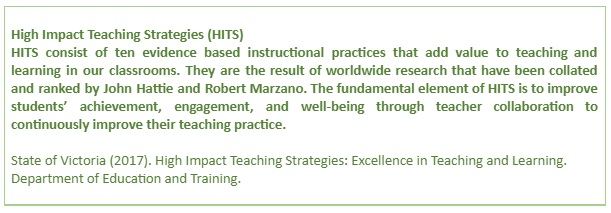
According to Hattie (2009) direct instruction has the effect size of 0.59. An explicit lesson should clearly demonstrate:
WHAT students need to do
HOW they are going to do it
In an explicit lesson, both the teacher and students have a clear pathway of the steps that are involved in achieving success. We need to create numerous opportunities during the lesson to help our students get a lot of practice before they actually complete the work linked to the purpose of the lesson.
It is up to us to make the lesson explicit as it is the teachers who make decisions on learning intentions and success criteria.. It is not the students’ jobs to discover, construct, and decide what they need to do. The teacher then ensures that these are clear and transparent so there is no ambiguity for the students.
The aim here is to sequence the lessons in step-by-step sequential and systematic instructions to give our students multiple chances to practise. This provides them opportunities to grasp, apply, and refine what they are learning before they attempt the final piece of work.
In an EAL classroom, explicit teaching would be the norm rather than the exception. It is a crucial element if we want our EAL students to experience success in the classroom.
We can create explicit lessons in an EAL classroom by checking that we are:
Ensuring that the lesson is differentiated at every step
Sharing good examples of what we would like the students to produce
Allowing time for students to practise and apply what have learnt
Providing continuous and explicit feedback so they can improve on their work
Allowing students to monitor their own work
Using simple and clear language
Providing clear scaffolding
Modelling the process clearly
Celebrating small successes
Building up small, simple tasks to achieve the end product
Allowing time for reflection and discussion
Allowing time for small group and pair work to provide additional support
Using simple editing tools
We can measure the success of an explicit lesson when our students are able to explain and provide examples of our expectations clearly.

